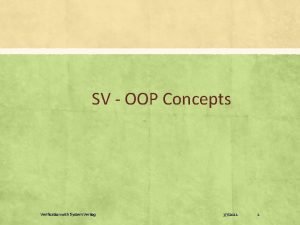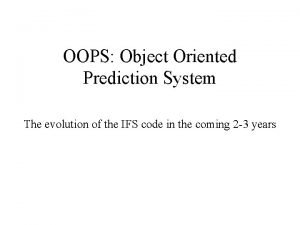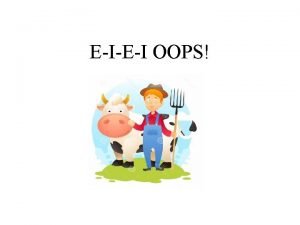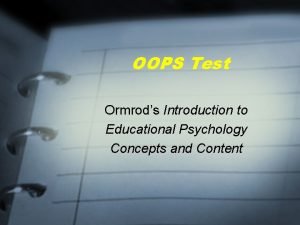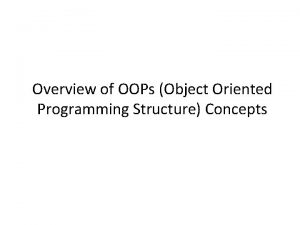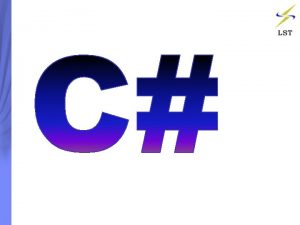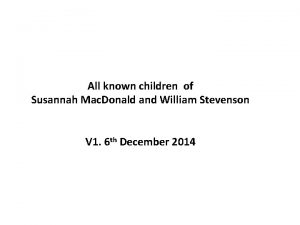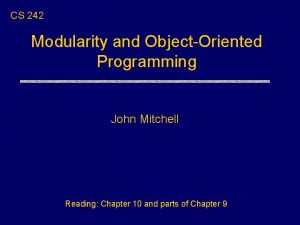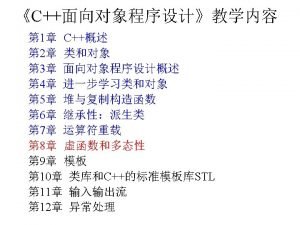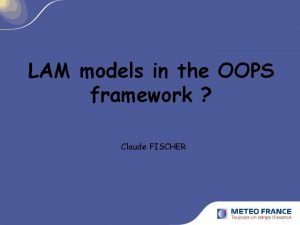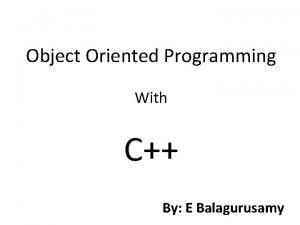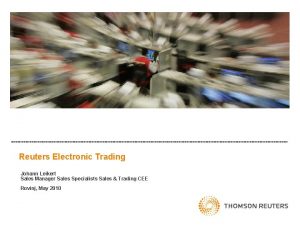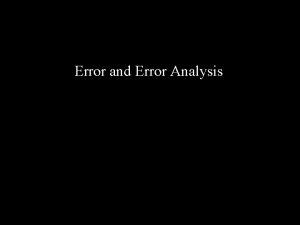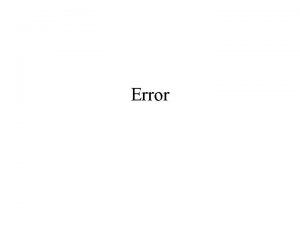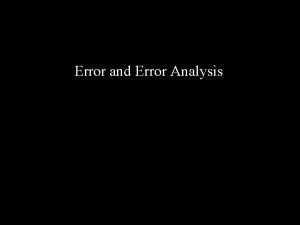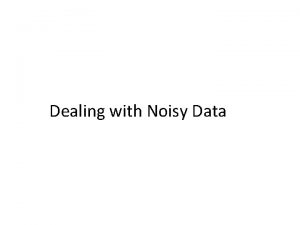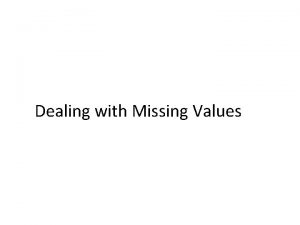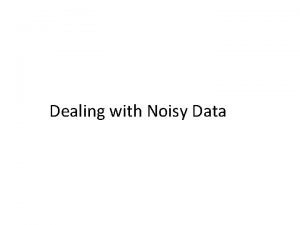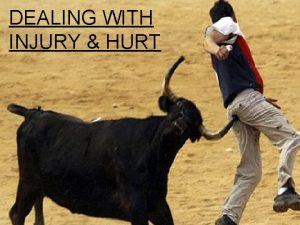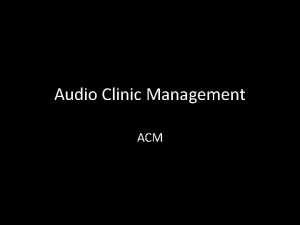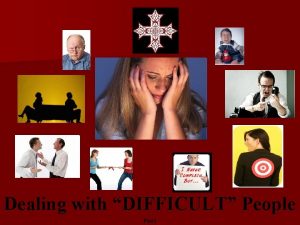Dealign with ERror Dealing with Error Oops I




















- Slides: 20

Dealign with ERror Dealing with Error “Oops!… I did it again” --Britney Spears CS 128/ES 228 - Lecture 12 b 1

Sources of Error n n n n Lack of precision Lack of accuracy Transference error, e. g. typos Human error, including bias Poor sampling Improper analysis Data rot Hardware error CS 128/ES 228 - Lecture 12 b 2

What is error? n “Error is the physical difference between the real world and the GIS facsimile” -Heywood, Cornelius, & Carver, p. 178 n Errors are impossible to avoid, but can be accounted for? CS 128/ES 228 - Lecture 12 b 3

Accuracy vs. Precision Figure 10. 1, An Introduction to Geographic Information Systems by Heywood, Cornelius, and Carver CS 128/ES 228 - Lecture 12 b 4

Where does lack of precision come from? Sloppy measurement n Imprecise equipment n Poor input assumptions n Accumulated error n How do we fix it? n Get better equipment and use it carefully CS 128/ES 228 - Lecture 12 b 5

Imprecise equipment includes both hardware and software Aliasing is an intrinsic problem of GIS’s CS 128/ES 228 - Lecture 12 b 6

Where does lack of accuracy come from? Dubious source data n Incompatible source data n • Data collected at different times through different methods, possibly in different formats n Dubious modeling • Poor choice of model, e. g. raster vs. vector • Including issues of information loss involving file compression CS 128/ES 228 - Lecture 12 b 7

When is accuracy a bad thing? n Map simplification n Features are omitted n Area features become lines or points n Exaggeration n Features’ apparent size is “increased” (e. g. hydrants) n Features’ separation is increased on the map for visibility Must Mapquest be accurate? CS 128/ES 228 - Lecture 12 b 8

Another time for “less accuracy”? or CS 128/ES 228 - Lecture 12 b 9

Figure 10. 5, An Introduction to Geographic Information Systems by Heywood, Cornelius, and Carver CS 128/ES 228 - Lecture 12 b 10

Where does transference error come from? n Typos, etc. n n Can be prevented through diligence and software “sanity” checks Format conversion n Many inter-format conversions cause loss/corruption of data/information CS 128/ES 228 - Lecture 12 b 11

Transference Errors can be fun n “geographic information systems is an interesting course” n “지리적인 정보 시스템은 재미있는 과정 이다 ” n “The geography information system is the process which is fun” Thanks to http: //babelfish. altavista. com/babelfish/tr CS 128/ES 228 - Lecture 12 b 12

Digitization (transference) errors CS 128/ES 228 - Lecture 12 b 13

Where does human error come from? n Sloppiness n Bias • (an unintentional form of lack of accuracy) n Sources of bias • Mental maps • Cultural • Purposeful CS 128/ES 228 - Lecture 12 b 14

Where do errors of analysis come from? n Faulty understanding of statistics and statistical packages n n See CS 128/ES 228, Lab 10! “There are three kinds of lies: lies, damned lies, and statistics” - Benjamin Disraeli, British politician, 1804 -1881 CS 128/ES 228 - Lecture 12 b 15

Where do errors of data rot come from? n Link rot Not Found The requested URL /cs/dlevine/ was not found on this server. Apache/1. 3. 27 Server at www. xxx. edu Port 80 n Poor “style” n E. g. “Employees may appeal to Dr. Wickenheiser” as opposed to “Employees may appeal to the President of the University” CS 128/ES 228 - Lecture 12 b 16

Where do hardware errors come from? Hardware failure Hardware Limitations CS 128/ES 228 - Lecture 12 b 17

What is a hardware limitation? Numbers in a computer are stored in a finite number of bits. n Using too few bits can cause round-off error. n Box 9. 2, Principles of Geographic Information Systems by Burrough and Mc. Donnell CS 128/ES 228 - Lecture 12 b 18

Errors of Categorization n “It is nearly impossible, and intrinsically wrong to try to place errors into neat categories” --david levine CS 128/ES 228 - Lecture 12 b 19

How do we minimize (NOT avoid) error? “CONSTANT VIGILANCE” -- “Mad Eye” Moody Defense Against The Dark Arts Instructor Hogwarts School of Witchcraft and Wizardry CS 128/ES 228 - Lecture 12 b 20
 Systemverilog oops concepts
Systemverilog oops concepts Evolution of object oriented programming
Evolution of object oriented programming Eiei oops
Eiei oops Azure dev oops
Azure dev oops Oops test
Oops test Structure in oops
Structure in oops Index of oops
Index of oops Oops wrong answer
Oops wrong answer Eiei oops
Eiei oops Oop modularity
Oop modularity Polymorphism jav
Polymorphism jav Oops
Oops Oops wrong answer
Oops wrong answer Encapsulation abstraction inheritance polymorphism
Encapsulation abstraction inheritance polymorphism Life cycle of a butterfly vocabulary words
Life cycle of a butterfly vocabulary words Oops framework
Oops framework Java and c++ difference
Java and c++ difference Oops wrong answer
Oops wrong answer Abiotic
Abiotic Alan linning
Alan linning Aegisoft
Aegisoft
